The Heart and Soul of our Communities
Let's break ground on how cities across the country are successfully redeveloping -- or just outright developing -- downtown districts
Note: Today’s post runs a little long (lots of pictures and videos!) and may not completely display in this email message. Click on “View entire message” to see it all in your email app.
Jabari Simama, a former two-term member of the Atlanta City Council, headed to City Hall in December for a holiday party. He ran into folks he hadn’t seen in years and was moved by the “esprit de corps” they shared. Writing in Governing, Simama said the get-together “prompted me to think about government centers in a different way.”
Not only are they places for public officials to conduct official business; at their best, they are also destinations, town centers and places for residents to meet, interact and celebrate what makes them and their communities unique and special. They are, or should be, the souls and hearts of their communities.
We wholeheartedly agree. So, today we begin a Good Government Files series that looks at places where that winsome idea has become reality. We’ll see how city facilities anchor thriving downtown districts that provide a sense of identity to what might otherwise be just another town along just another interstate or state highway.
We’ll look at what it takes to pull off the kind of effective redevelopment that brings a dormant district back to life in a way that honors the past while acknowledging a dynamic present and looks to a more resonant future. (And, in at least once case, we’ll look at a city that basically created a town center out of whole cloth.) What it takes is vision, comprehensive planning, the right kind of citizen engagement, and no small measure of political courage. But that looks different in different communities, which is something we’ll explore.
I beg your indulgence to start the series with a project I know well because I’ve seen downtown Round Rock, Texas, transition slowly but surely from mostly deserted 34 years ago to now thriving and still evolving today. I was fortunate enough to be the project manager for the Downtown Master Plan project, so I have some detailed insights into how it happened. I also interviewed the lead consultant for our project — nearly 15 years after his stellar work was completed — to reminisce about our project and to muse about downtown redevelopment in general.
Simama’s quote took me back to a discussion the Round Rock City Council had a couple of decades ago when they were thinking about where to locate a new City Hall. A developer was offering up a site in the geographic center of the city, looking for an anchor tenant for a proposed commercial project. The existing City Hall sat in the historic downtown, then best known for being the site of an actual, by-god Wild West shootout in 1878.
The discussion was occurring at the council’s annual strategic planning retreat. Dick Bowers, the dynamic former city manager of Scottsdale, Arizona, facilitated the conversation. Dick spoke of the intrinsic value of the city deepening its roots in historic downtown, which he noted should be “the heart of the community.” That resonated with our elected officials, who shortly thereafter made the decision to keep City Hall downtown.
Of course, one decision inevitably leads to another. In this case it was, whither downtown? There were a mere two blocks of historic buildings, and you can’t really have a “heart of the community” in a place that small. But the wider area had the bones of a healthy downtown district, with a (mostly) nice street grid, the allure of serene Brushy Creek flowing nearby, and many lovely historic homes — and, frankly, some not so lovely but with the potential to be lovingly restored.
Around that time, two books — “The Rise of the Creative Class” and “The Third Place”1 — inspired city planners and elected officials across the county to start thinking of “quality of place” as essential to attract the new breed of “knowledge professionals” who could live and work anywhere they could plug in a laptop. Where these talented folks wanted to live were in locales that contained great restaurants, pedestrian-friendly streets, bike lanes, art venues and other enticing amenities.
We started by hiring renown walkability guru Dan Burden to conduct a “walking audit” of downtown. An excellent photographer, Dan’s pictures were better than a thousand words in describing the myriad ways our downtown was not pedestrian friendly.
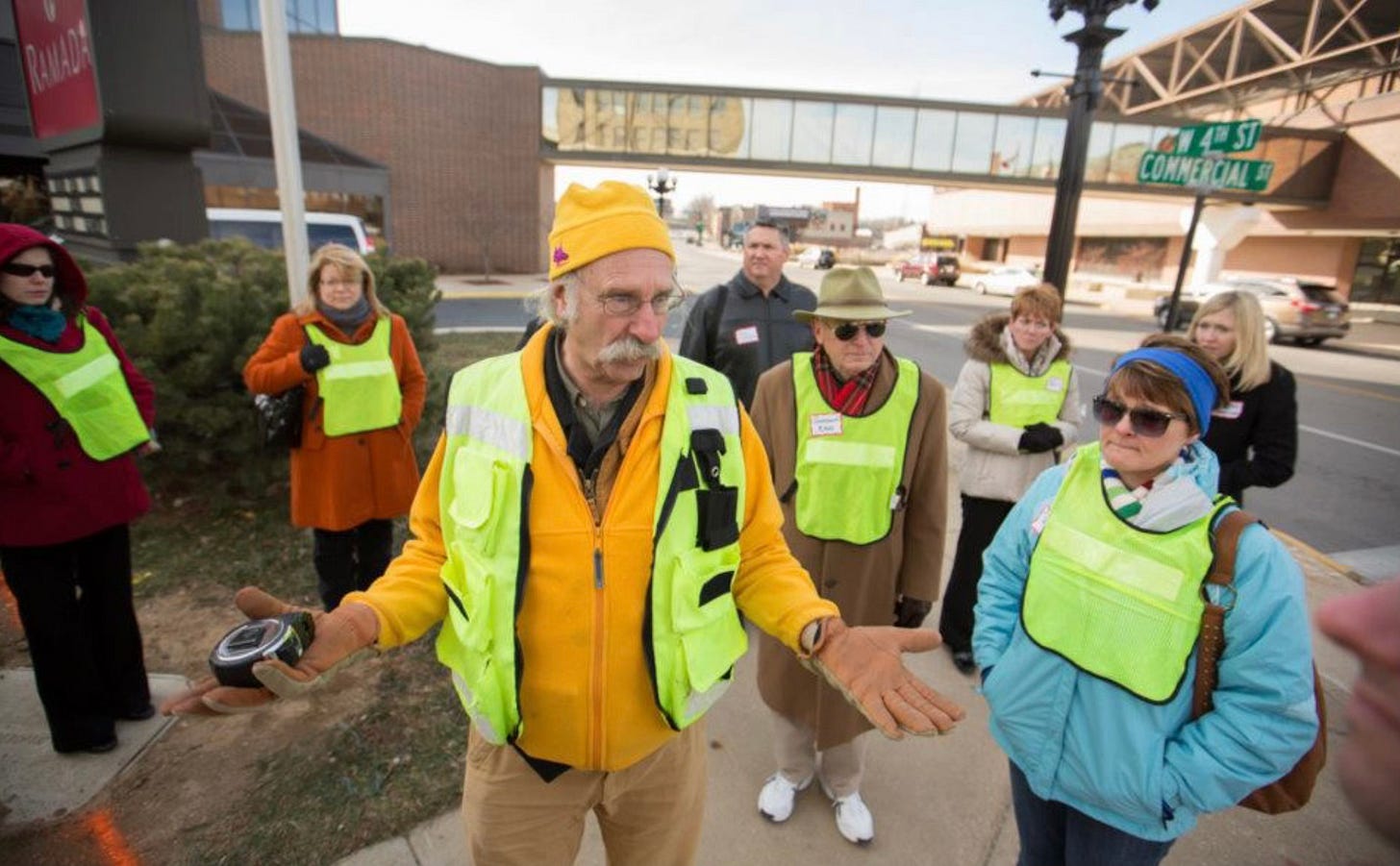
The solutions to the walkability problems Dan identified — slowing down vehicular traffic, widening sidewalks, planting trees along the streetscape — would require more extensive planning. Concurrently, the city was beginning to experience pressure to allow redevelopment in the neighborhood adjacent to that two-block strip of historic buildings we called the downtown core. Commercial interests were looking at buying residential properties a block or two off the main roadways through downtown to convert into retail or office space. The prospect of piecemeal zoning changes excited absolutely no one.
So, Round Rock did what smart cities do: It created a master plan. The plan, approved in 2010, cast a compelling vision that would be achieved through a comprehensive set of recommendations to ensure orderly redevelopment. Here’s how the plan put it:
The Downtown Master Plan recognizes the inevitability of growth and the imperative to get ahead of that growth and influence it rather than react to it and regret.
There’s a whole bushel of thorny issues to be worked through in these downtown plans. In no particular order, they are: Where to locate a new city hall and/or municipal court and/or senior center and/or public library (or all of the above!). Streets likely need to be reconfigured to make them more pedestrian friendly; underground utilities are often aging in these historic districts as well as undersized for future growth; zoning changes will be required to allow mixed use projects and more dense residential development to occur. Don’t even get me started on stormwater drainage and water quality issues. Last but certainly not least is historic preservation.
So, yeah. Piece of cake, right?
Here’s the Mission Statement we crafted, which served as our north star.
The goal of the Master Plan is to create a design and policy strategy for a thriving town center featuring a viable mix of retail, dining, entertainment, residential and public spaces, in a walkable and historically-sensitive environment to enhance our sense of place, economy and quality of life.
It’s the kind of multi-disciplined effort that requires a mix of professionals with significant experience to be able to pull it off successfully. And by that, I mean putting the plan together in a way that earns city council support as well as provide the guidance to get it implemented.
We put out an RFQ (request for qualifications), interviewed the top firms in the field and hired a team led by Torti Gallas of Los Angeles. Project lead Neal Payton assembled a 22-person design team that included seven firms. We had specialists in urban design, economic analysis, circulation/transportation, historic preservation, landscape and civil engineering. The contract was around $500,000. I recall some folks internally questioned the cost. Today, no one questions whether it was money well spent. The investment has paid off for the city in so many ways it’s hard to enumerate (but we’ll try; that’s why today’s newsletter is so long). Importantly, the contract signified the seriousness of the City Council’s intention to do right by downtown.
To start, we’ll share some of the plan basics. Before we went out for public input, city staff and members of the Torti Gallas team spent a day thinking through all the ways the plan could get derailed, shelved, or torpedoed. It’s a process I describe in this post, Why (and How) You Need to Think Long and Hard Before You Engage the Public. In short, the process helps determine the objectives needed for plan approval and identifies the tools best suited to meet those objectives.
In this case, the key public engagement tool was a charrette, an intensive, weeklong brainstorming session that occurred at the beginning of the design process. Neal and his band of merry planners set up shop in the community room of the McConico Building, a city office building downtown. They worked around foldout tables with maps, photos and other planning accoutrements while members of the public ambled through, got questions answered and shared their hopes and dreams for how downtown Round Rock should grow.
On the first evening of the charrette, there was a public meeting where Neal explained the basics of the planning process. Mid-week, a second public meeting shared the highlights of the work to date. At the end of the week, the public meeting showcased the initial design concepts that Neal and his team would take home for further refinement. So, in week one the public could literally see their input was being taken seriously and was indeed laying the foundation for the plan.
That’s how you build credibility and trust early on in these always controversial projects.
A talented and thus in-demand guy, Neal has led countless charrettes. Done right, they are magic. There must be the right atmosphere to conjure that enchantment from all involved. Neal is a master.
“I judge a good charrette by asking this question,” Neal said. “Is there anything about this project that is different because of the charrette? Would we have come up with the same plan if we had not done the charrette? I always look at that as a benchmark. It’s a process that opens that up if you’re truly willing to listen.”
In our project, the different idea was the Heritage Trail along Brushy Creek. For years, there had been plans to build a standard hike and bike trail along the creek. But our Parks and Recreation planners, working collaboratively with the Torti Gallas team, came up with the idea that the trail would tell Round Rock’s rich history with interpretive signage, sculptural elements, and other thematic elements. I’ll never forget the look on David Buzzell’s face when he described it to me, sitting at the table with the project’s landscape architects. David, the parks development manager (now assistant director), was absolutely beaming.
Neal says that’s not unusual. Staff involvement in a charrette led by a consultant allows them to start “iterating together.”
“They (government staff) are talking, they’re explaining what they’re doing, what their budget priorities are, what their projects coming up are,” he said. “And sometimes they’re doing great things, but sometimes getting them all in the same room and having some other entity doing this (design planning), and they start to think, ‘Oh, my god, we could do this there. We never thought of that.’ Sometimes that happens, sometimes it doesn’t, but you’re letting the opportunity exist.”
While folks had various concerns about various elements of the initial plan concepts, everyone was enthused about the Heritage Trail.
Here’s how David’s vision is becoming a reality. The above photo shows a pedestrian bridge under construction over Brushy Creek (that’s the city’s namesake in the bottom center of the picture) while the below photo shows how that exact spot looked back when cattle were being driven up Chisholm Trail at the round rock.
The trail will ultimately connect neighborhoods west of Interstate 35 to downtown. It’s a massive quality of life win for the community, which has consistently ranked the development of hike and bike trails as a top priority in city surveys. And the idea was born at the charrette.
Implementation roadmap
The plan presents a multi-pronged implementation framework of recommendations that includes seven “catalytic projects.” “These projects are critical to the success of downtown Round Rock and have the potential to activate key areas with dynamic designs and uses,” the plan states. Among the catalytic projects were streetscaping in the historic core and along the major roadways that bisect the district, a new town green under the iconic water tower in downtown, and the Heritage Trail.
The envisioned streetscaping was among the early plan elements implemented, and it was further enhanced in the historic core in 2020 with a series of parklets which expand the sidewalk to provide additional space for seating and even live music performances.
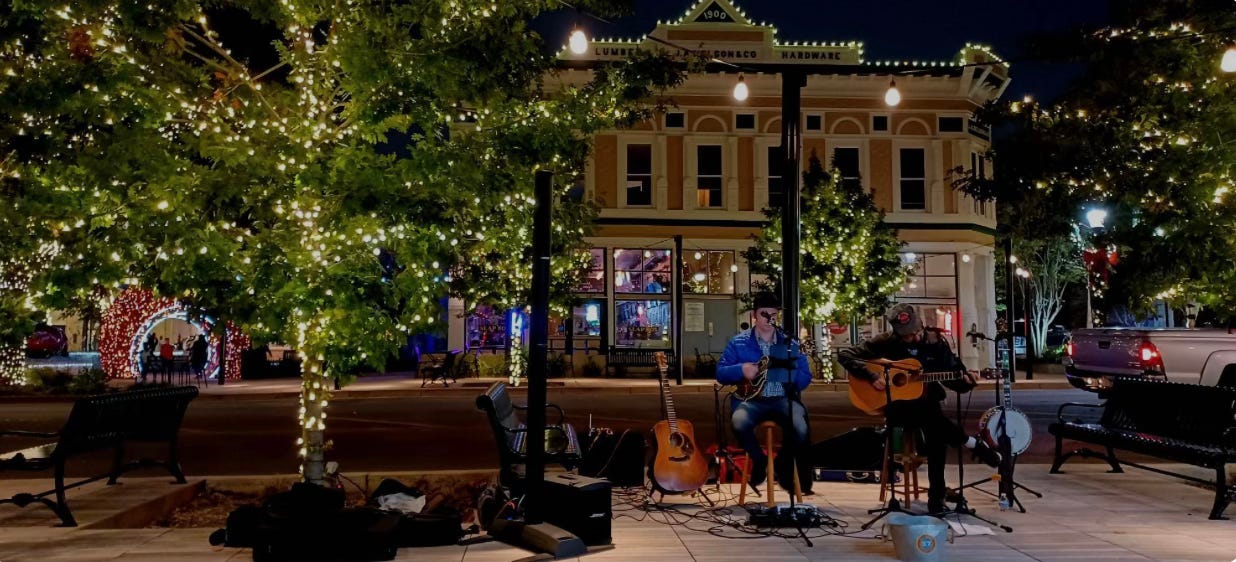
The next major element of the implementation plan was the development and implementation of new zoning categories that would allow the kind of mixed uses envisioned by the plan. Here are the highlights of that award-winning project, shepherded in 2014 by the unflappable Brad Wiseman, then planning director and now assistant city manager. If you’ve even seen a downtown rezoning process up close and personal, you know it goes much better if the planning director cannot be flapped.
I’ll spare you the technical but critical details of how water and wastewater lines have been updated in the area to support the increased density allowed by the new zoning. Suffice it to say, if you don’t get this utility work right all those cool creative class types won’t be able to take a shower or flush the toilets in their trendy walkups.
About nearly killing Dan Burden …
One of the most important projects was the reconfiguration of the busiest intersection in downtown. Here’s what it looked like back in the day.
Crossing Mays Street on Main Street (X marks the spot) on foot used to earn you a scout badge for bravery. And this is where Dan was nearly run over by a driver in a Ford F150 making a right onto Mays Street. Truth be told, Dan wasn’t the only consultant whose life we put at risk while making walking tours of downtown at that same (and quite busy) intersection. Here’s how the plan envisioned the reconfigured intersection.
That’s not exactly how this section of downtown looks today. We put a roundabout at the intersection of Round Rock Avenue and Brown Street (top left). Which brings us to another element of the plan that’s been implemented: gateway signage. Here’s the one in that roundabout.
And here’s one on Mays Street heading into downtown from the north.
When it came time to build a new library, the City Council pondered for literally years where it should be located. “Who knew this would be the hardest decision ever,” then-Mayor Alan McGraw quipped one day. They ultimately decided on a location one block east of its Main Street location, keeping it in the heart of downtown. It was a popular decision. Check out the line on day one at the beginning of the video below.
The former library building, smack dab on Main Street in the historic core, is being extensively renovated to the tune of $19.5 million. It will include the Round Rock Visitors Center and a two-story Arts and Culture gallery on the first floor, with offices for the Round Rock Chamber on the second floor. The north side of the building will provide additional flex space for City operations. The coolest part of the project will be the creation of a paseo, or walkway, that connects a popular plaza on Main Street to the courtyard of the new Public Library, which is adjacent to a new 289-space parking garage.
While there has been significant investment by the city in downtown — it’s currently at an eye-popping $174 million2 — the private sector has been busy as well. In typical downtown redevelopment projects, Neal says the private investment will far outstrip what the city has invested.
“It’s a pittance compared to what private enterprise will bring to it,” he said.
Here’s a look at one of the more compelling projects. The Ruby is a boutique hotel on the banks of Brushy Creek, just a few blocks north of Main Street.
Class A office space rose up in 2015. A long-awaited townhome project is now under construction next to City Hall. There’s always been plenty of great places to dine but now there’s a growing retail presence as well.
I could go on, but you get the idea. This post has already gone too long to fit in your email. In Part 2 of the series, we’ll spend more time with Neal discussing the critical elements of successful planning efforts and the sometimes wackadoodle politics that often accompany them. I’ll also spend some time on the branding and marketing of downtown Round Rock, because that became the responsibility of the communications shop I led, and has a set of challenges distinct from the other issues we’ve already covered.
For those who want to check out the full 166-page Downtown Master Plan document, here you go.
Implementation Strategies and Policies
Onward and Upward.
Paid links. As an Amazon associate I earn from qualifying purchases.

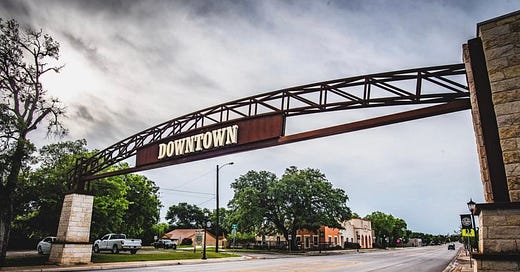


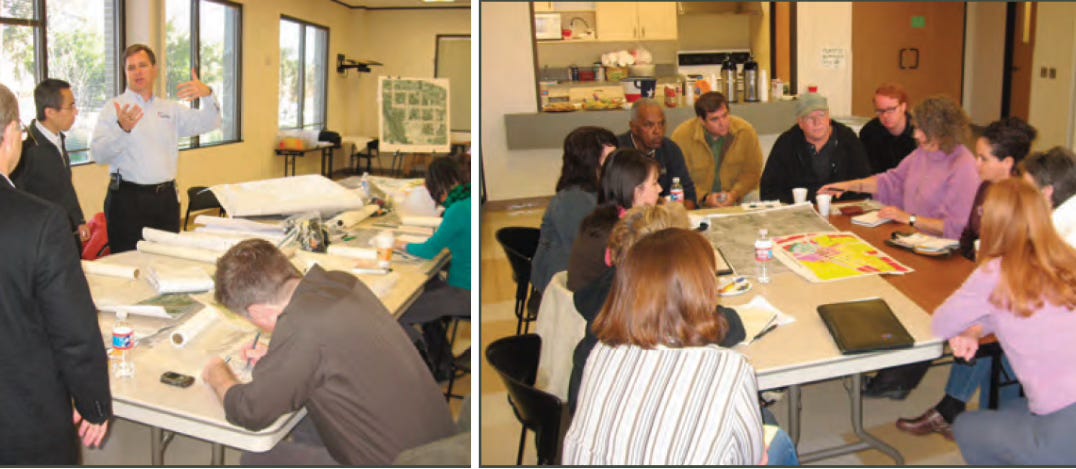
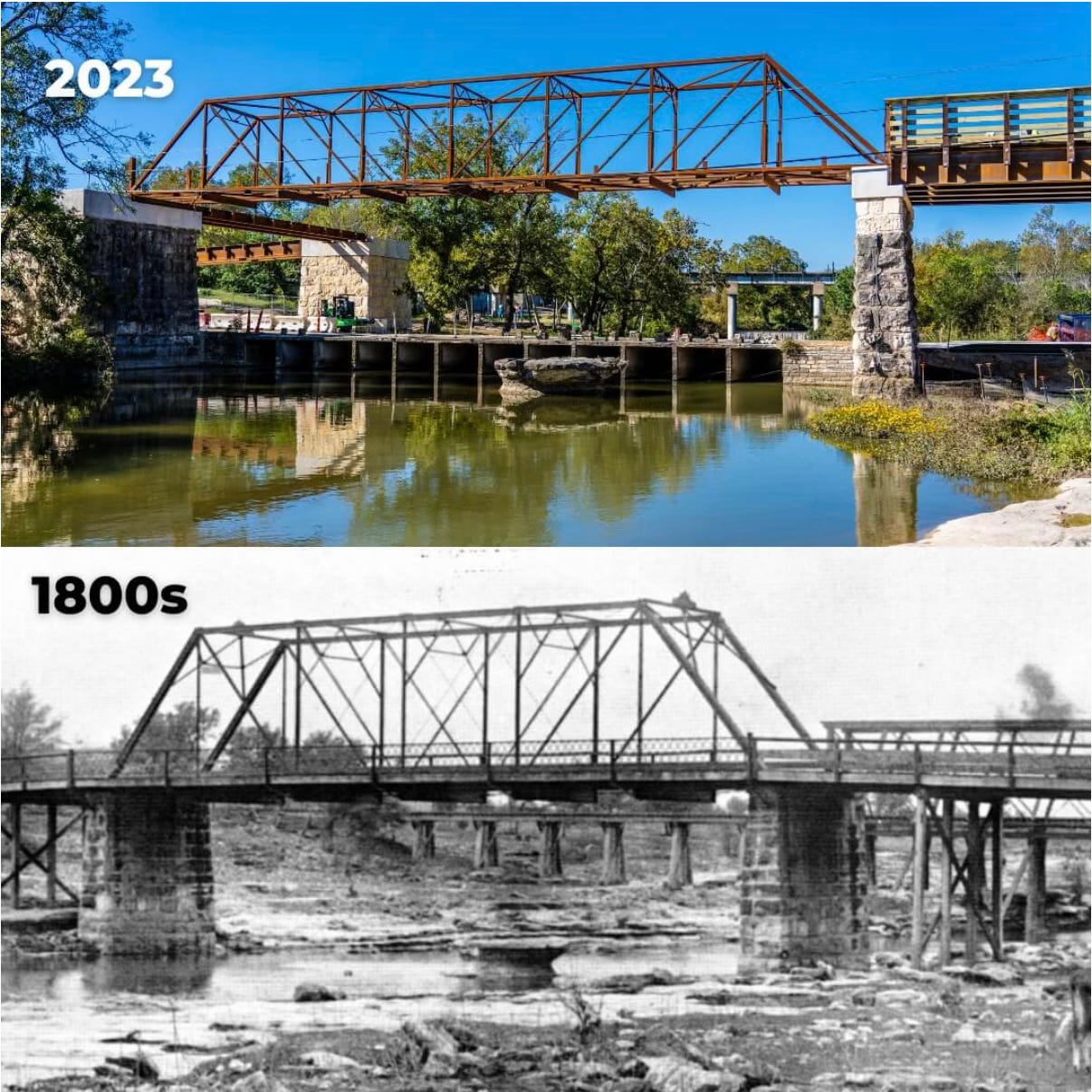
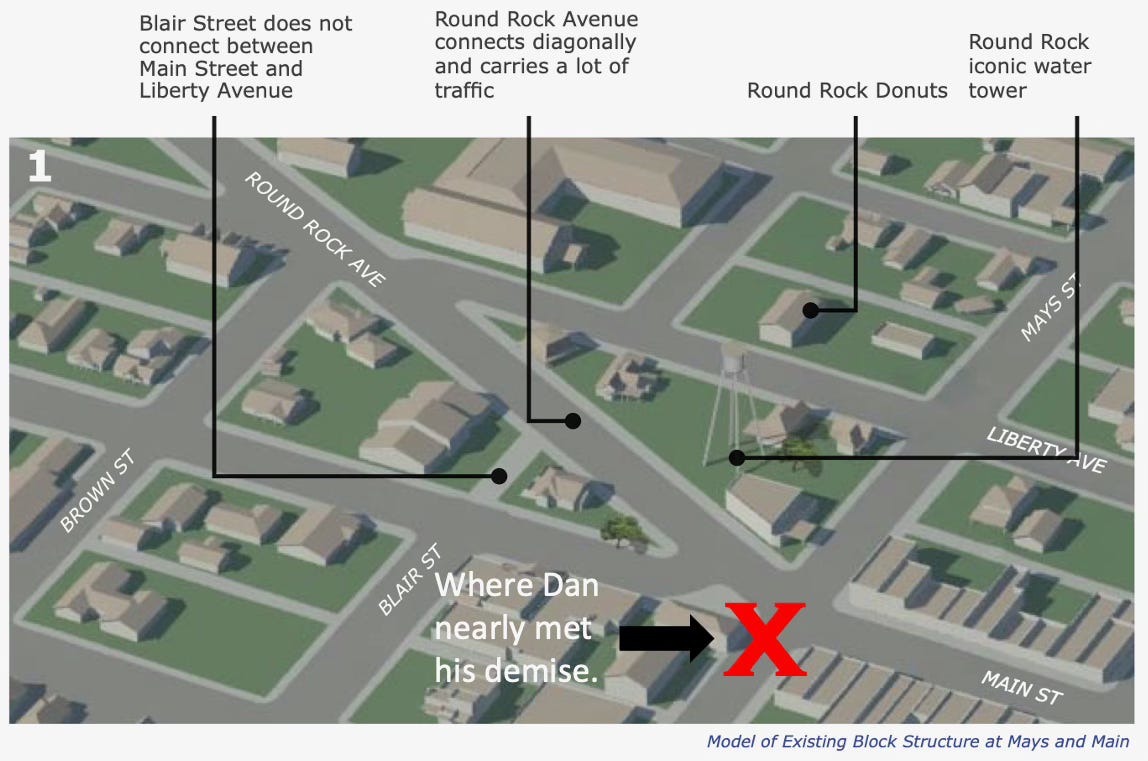




You are so right, Will,
that this is the heart and soul of it all.
Thank you for giving it to us.